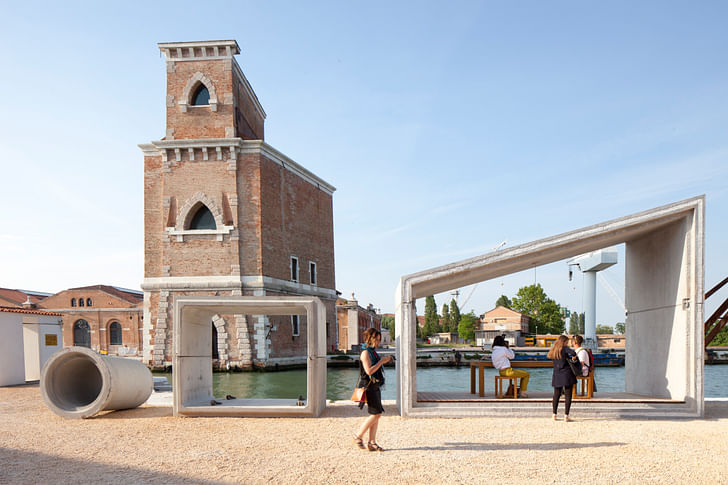

Summary is a young architectural studio based in the Science and Technology Park of University of Porto, Portugal, founded by Samuel Gonçalves. Recent winners of the esteemed Red Dot Award in the "habitat" category, the firm has become known for projects such as the 'gomos house' and their installation for the 2016 Venice Architecture Biennale, that focus on prefabrication and simplifying solutions to the building process.
In the following Small Studio Snapshot, we talk with the studio about their founding, the specialization driving their projects, and their unique graphic design.
How many people are in your practice?
We are currently five.
Why were you originally motivated to start your own practice?
When we created the studio, Portugal was a post-crisis country, with a lack of money, very few public investments and quite limited resources. Within these conditions, we didn’t find offices in the country that could give us a stable position or an enthusiastic job. At the same time, we understood that these same conditions were creating a new market in Portuguese architecture that nobody wanted to take: the market of quick, standard and low-cost building. We took it. At the beginning it happened because of the necessity, now it’s becoming our specialization and it’s driving all our projects and investigations.
You guys have a very specific style in your drawings. I am wondering if you can talk a bit about that.
These drawings are not just final illustrations of the projects, they are part of our working process
It was not a goal to achieve a specific representation style, but we’ve been noticing that somehow it’s happening. It's all done in-house. These drawings are not just final illustrations of the projects, they are part of our working process. When we are drawing something we always use this exercise to synthesize the design in a simple scheme with no more than four colors. When this is not possible, it means that the form is not simple enough. So, these schemes work as a permanent reminder we need to think simple and schematically. Then the GIF’s are just a compilation of this working material, and sometimes we use it to represent the different steps of the construction system we are proposing or the sequential line of thought behind each project.


What hurdles have you come across?
The path for a young architectural studio like us is never easy. We started with 2 people and in 2 years we have increased to 5. I would say the toughest task is keeping our work methods organized; it’s quite difficult in an office where there’s always someone new joining the team.
Another hurdle we find is our face: we look too young to seem credible facing our clients. Anyway, there’s nothing we can do about it :)

Is scaling up a goal or would you like to maintain the size of your practice?
Our goal is to keep getting more works which enable us to keep contributing in the field we choose to tackle: the acceleration and optimization of the building processes. If it's still happening we will increase for sure. But scaling up will be a natural consequence of our work, and not a goal itself. Anyway, we are currently improving our work-flow procedures, making it increasingly organized, so we are prepared to enlarge our team. The point is to build working methods that enable the studio to function as a unitary group and not as a group of "taskers" who work under the strict orientation of an individual.
What are the benefits of having your own practice? And staying small?
We have the freedom to choose our path. And when you are small your “corporative responsibility” is also small. Thus, we don’t have any obligation to take a "business as usual” approach, so we can focus on developing the work and the investigations we want. In other words, when you run a small studio you get to choose and can do only what you find to be important.
No Comments
Block this user
Are you sure you want to block this user and hide all related comments throughout the site?
Archinect
This is your first comment on Archinect. Your comment will be visible once approved.